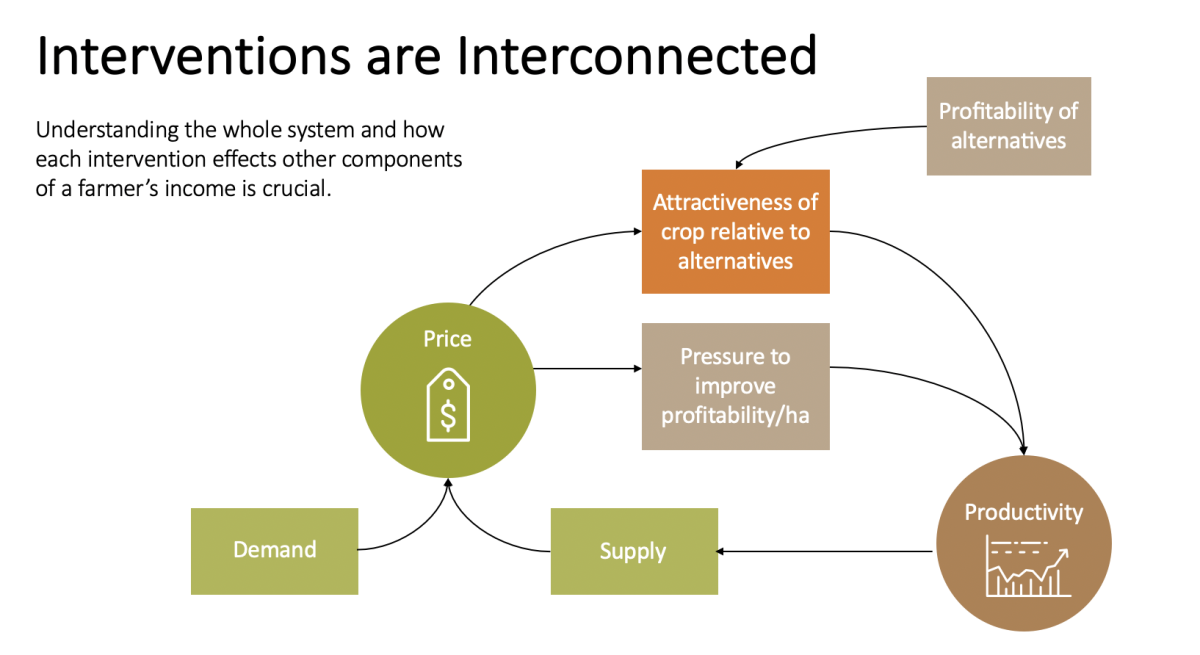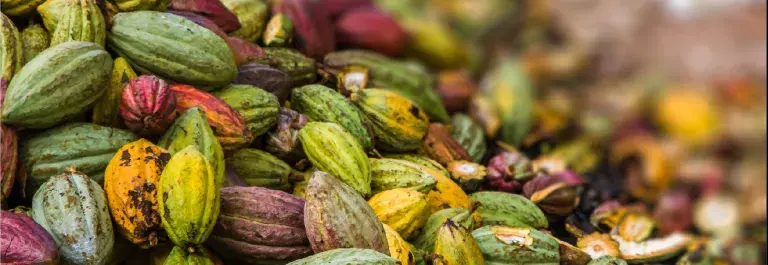Empowering action towards improved livelihoods
We often talk about system-level change to address root causes of poverty and imbalance of risk. This requires us to unite in different and creative ways. The Living Income Community of Practice motivates actors across sectors to help close the income gap, so that smallholders can earn a decent standard of living as a basic human right.
Rural farming communities are burdened – not just by poverty but also the high risk of agriculture. This has been compounded by the pandemic.
In addition, increasing transparency and shorter supply chains have led to a growing awareness of poverty and economic insecurity at the bottom of agricultural supply chains. This has encouraged an accelerated adoption of sustainability schemes in formal value chains and more research into the impact on farmer livelihoods. New research such as this is fundamental to deepen learning and drive improvements.
What does it mean to be able to afford a decent standard of living?
A decent standard of living is a human right. We are all accountable for the livelihoods of producers whom we depend on for our basic needs. The idea of a living income is about more than just basic subsistence and survival: it is about dignity, stability and resilience. And leads to lasting change.
The concept of living income builds on the work of the Global Living Wage Coalition, which publishes living wage levels for different countries based on a shared definition and methodology.
While a living wage applies to hired workers in farms, factories and other enterprises; a living income can be more complex to address, as it encompasses the hundreds of millions of smallholders and farmers who are self-employed.
These households may earn income from multiple sources, including off-farm labour and other businesses as well as a variety of crops. The Living Income Community of Practice works with stakeholders to better understand and address this complexity.
Measuring builds understanding and informs action
By looking at what constitutes a living income for smallholders in a region and what they earn today, it’s possible to get a clearer idea of what action needs to be taken to close that gap.
When working towards living income, it is important to recognise that smallholder incomes are multidimensional, and the starting points from which actors approach living income can differ.
This means that there are different approaches to measuring incomes. That said, they all should be built around the same foundations and principles for alignment and comparability.
The basic principles of how to define farm household income, and what elements to include in the calculation, are (mostly!) clear. In practice, there are many choices to make. Choice of data collection and estimation approach depend on several key factors. For example, your intended use for the data, which determines the detail that you require, calculation process and reporting indicators.
What does a living income approach mean?
Despite interventions and livelihood programmes, we still see a lack of or limited involvement of farmers in decision making at international and national levels.
In addition, a lack of transparency in the supply chain at national level, limited focus and support for alternative livelihood interventions for farmers, and unfavourable market trading practices remain.
To have the ‘system’ in the room, we need different and varied voices — particularly those most affected by poverty and the high risk of agriculture.
The living income concept intends to lift all farmers to at least a decent standard of living, but given that poverty is increasingly seen as a material risk for companies, how can we take a living income approach without excluding the most vulnerable and poorest farmers in the food system?
Living income for farmers is the responsibility of all actors in the value chain. Fair value chains for producers, which contribute to a living income, require more inclusive approaches that address root causes of poverty systemically. We can’t rely on a single intervention – we need strategies targeted at different groups and types of farmers.
Join the conversation and take action!
The Living Income Community of Practice is a vital platform for tackling these issues.
It drives multi-stakeholder discussion on common definitions and approaches to calculating actual and living incomes and provides clarity and guidance on baselines and benchmarks.
Transparency and data sharing is encouraged among stakeholders in the community. Different actors in the living income space bring expertise and share information, such as updates on living income studies, new benchmarks and development activities.
If you work in the living income space, join this open community, share information, and take part in the discussions.

Learn more about possible interventions in developing your living income strategy through our LI Toolkit.
The Living Income Community of Practice is coordinated by GIZ, Sustainable Food Lab and ISEAL.
Sheila Senathirajah is Innovations Senior Manager at ISEAL and represents the community of practice.
Get in touch for more information.
